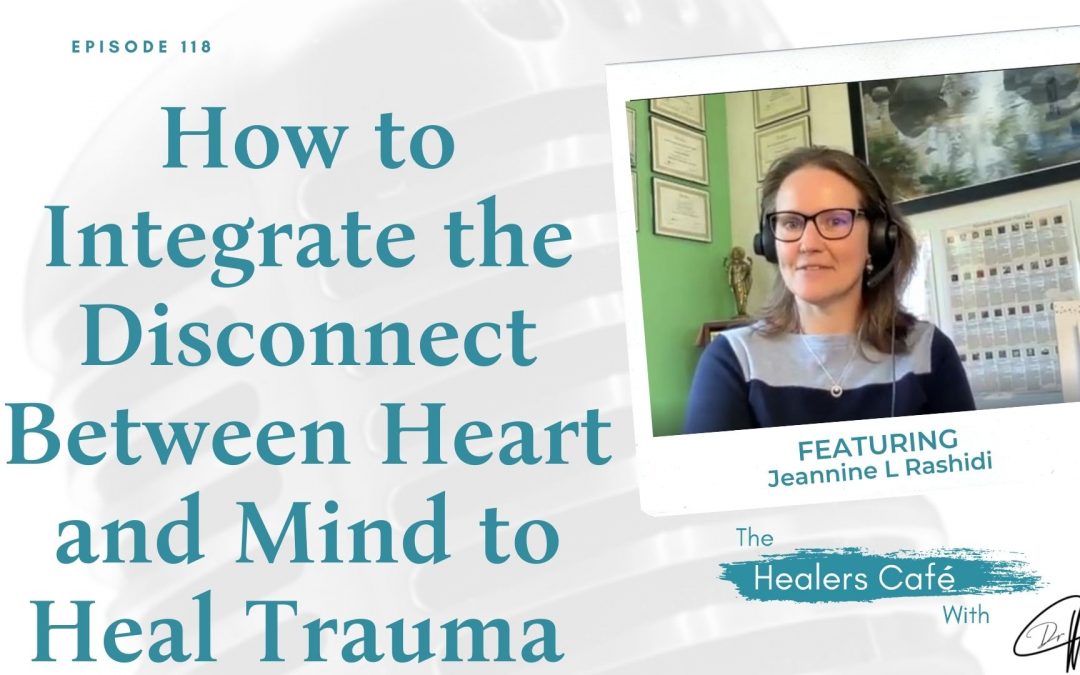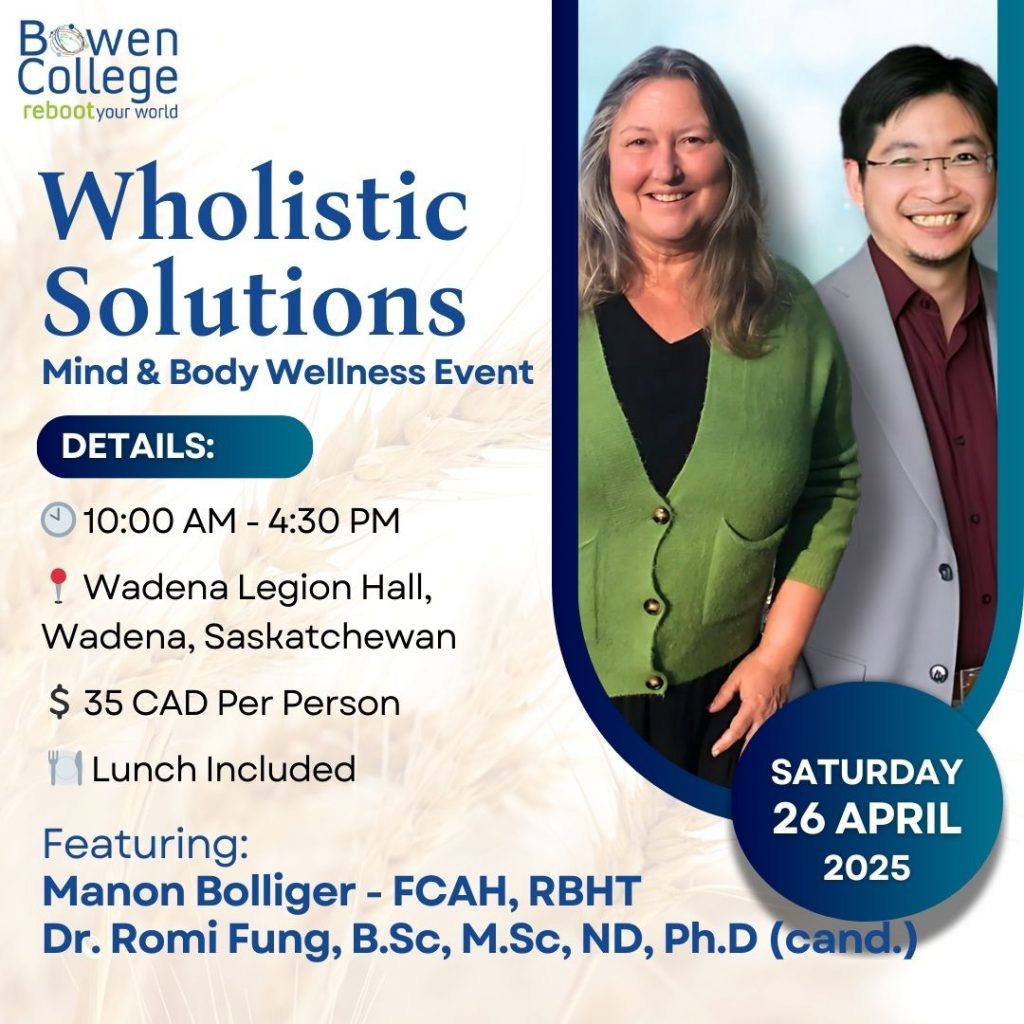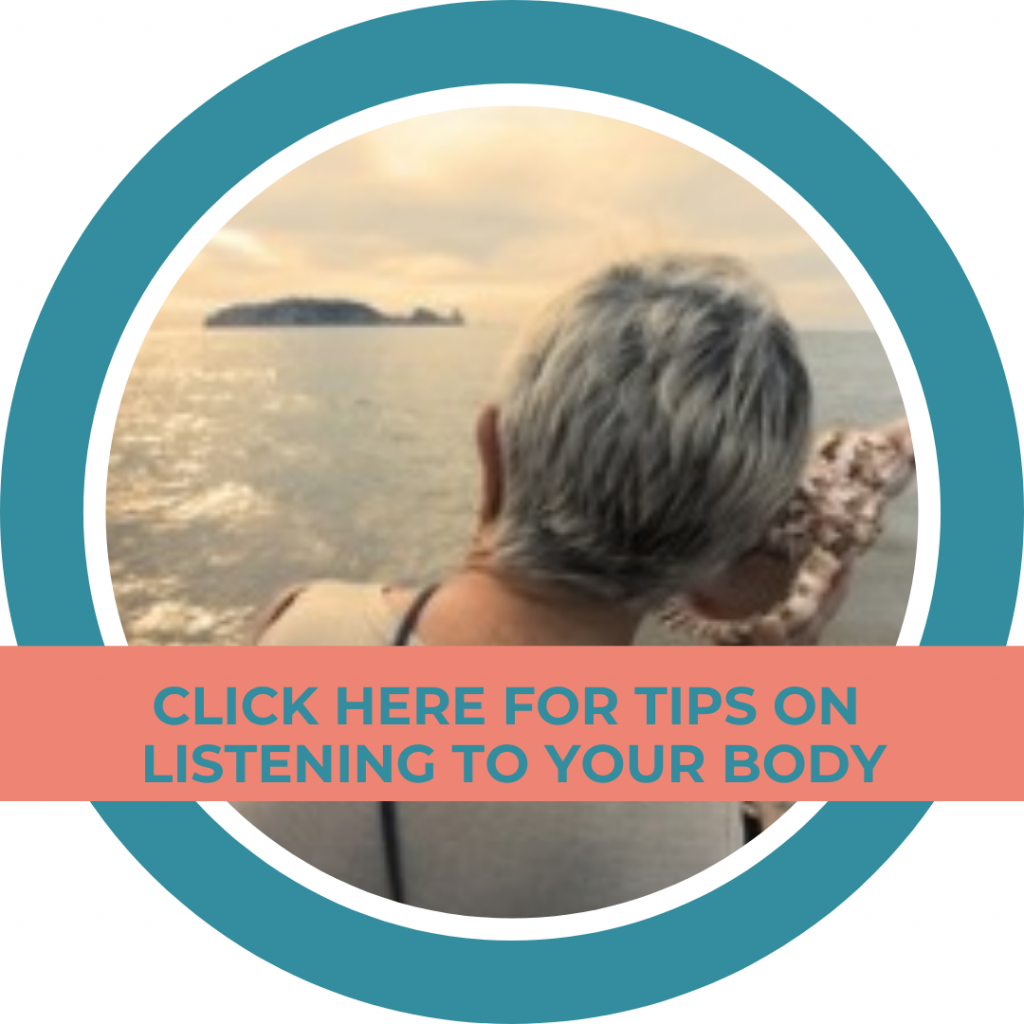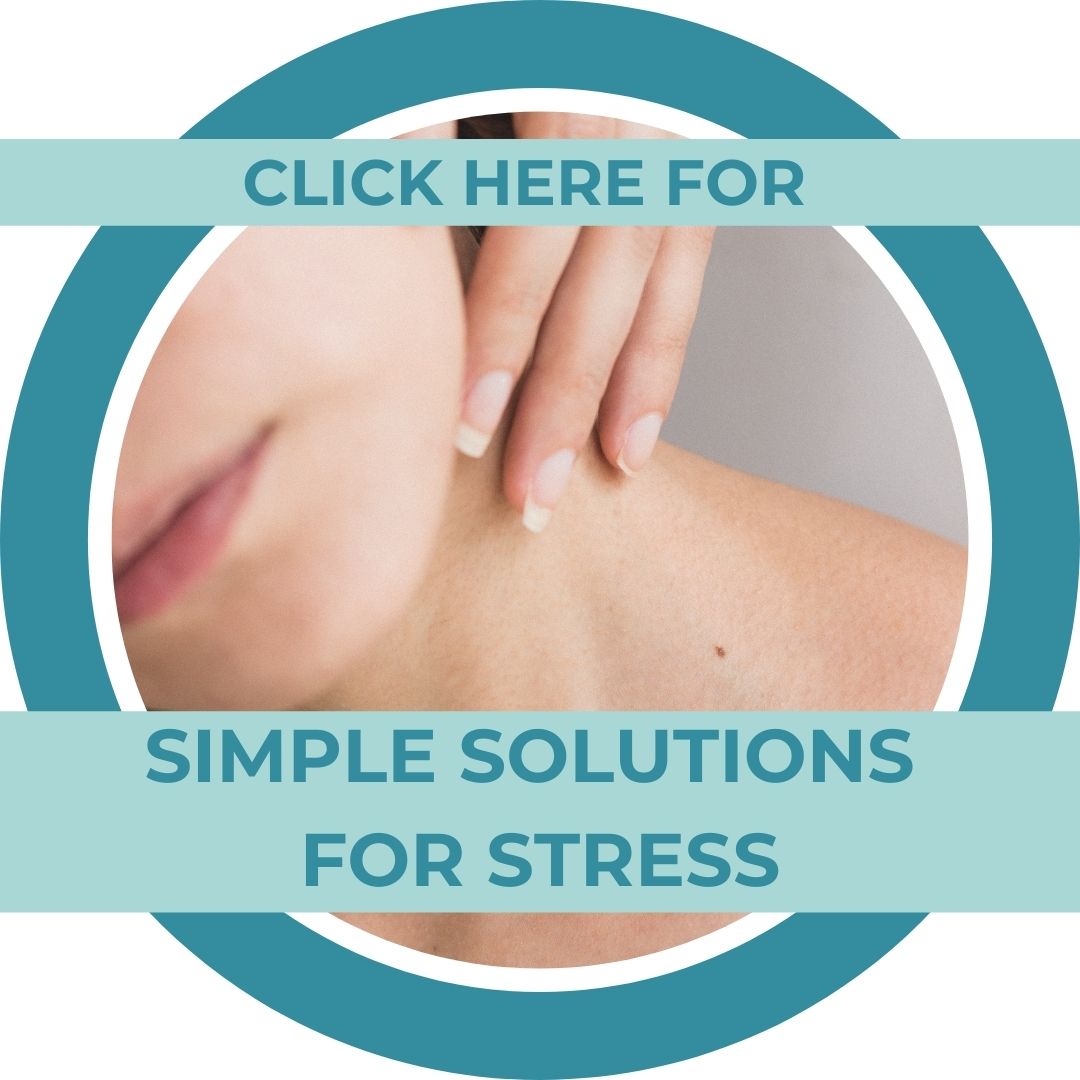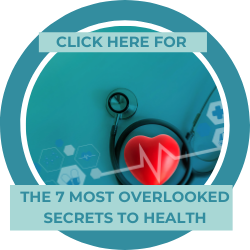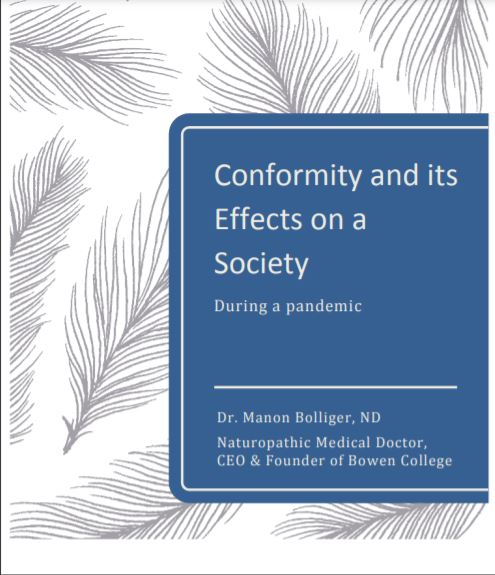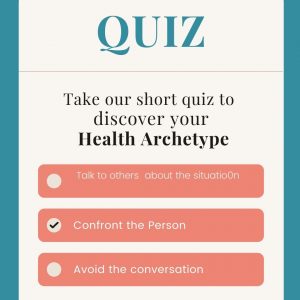How to Integrate the Disconnect Between Heart and Mind to Heal Trauma with Jeannine L Rashidi on The Healers Café with Manon Bolliger
In this episode of The Healers Café, Manon Bolliger (Deregistered naturopath with 30+ years of experience in health) speaks with Jeannine L Rashidi about how the most important relationship you will ever have is the one with yourself.
Highlights from today’s episode include:
Jeannine Rashidi 06:44
When we experience something that’s more than our mind body system can handle a fragmentation or a disconnect happens, it’s a way of the body and the mind protecting itself. But what happens when that trauma has finished, there’s still a disconnect. So, my mission really is to help people bridge that gap between that heart mind disconnect, which is how this method came to be
Jeannine Rashidi
Now, to be clear, whatever the story is, that’s arising, it does not necessarily mean that that’s exactly how the trauma played out. It’s how it has developed in one psyche, it does not matter if it’s true or not. Because if you believe it to be true, your mind body believes it to be true, that’s all that matters, we’re going to deal with it from that level.
Jeannine Rashidi
So, Ayuverda. It translates to the science of study of life, it’s the ancient medicine, you know, that originates from India over 5000 years ago. And essentially, what we are trying to help each person understand is that we have all of the five elements within us. And all of the five elements are around us. So, we are directly connected with nature. And what happens when one of the elements is off?
ABOUT JEANNINE RASHIDI
Jeannine Rashidi, the founder of Goodbye Tension and Doctor student at KAA ( Karela Ayurveda Academy), has been practicing for 19 years, guiding others towards physical, mental, emotional, and digestive relief. Her best-selling book, Abundance Beyond Trauma, showcases the EDHIR® process that she developed as a form of Sattva vajaya Chikitsa ; Ayurvedic Psychotherapy.
Core purpose/passion: I am most passionate about guiding anyone who has had Trauma; adverse life experiences toward integrating the disconnect between heart and mind to live a life of Abundance by finding the courage for change and commitment to oneself.
Freebie : Free 15 min. Exploratory call plus 10% off any package by mentioning this episode of your podcast.
About Manon Bolliger
As a recently De-Registered board-certified naturopathic physician & in practice since 1992, I’ve seen an average of 150 patients per week and have helped people ranging from rural farmers in Nova Scotia to stressed out CEOs in Toronto to tri-athletes here in Vancouver. My resolve to educate, empower and engage people to take charge of their own health is evident in my best-selling books: ‘What Patients Don’t Say if Doctors Don’t Ask: The Mindful Patient-Doctor Relationship’ and ‘A Healer in Every Household: Simple Solutions for Stress’. I also teach BowenFirst™ Therapy through Bowen College and hold transformational workshops to achieve these goals. So, when I share with you that LISTENING to Your body is a game changer in the healing process, I am speaking from expertise and direct experience”. Mission: A Healer in Every Household! For more great information to go to her weekly blog: http://bowencollege.com/blog. For tips on health & healing go to: https://www.drmanonbolliger.com/tips SOCIAL MEDIA: – Facebook | Instagram | LinkedIn | YouTube | Twitter | Linktr.eeAbout The Healers Café:
Manon’s show is the #1 show for medical practitioners and holistic healers to have heart to heart conversations about their day to day lives. Follow us on social media! https://www.facebook.com/thehealerscafeTRANSCRIPT
Welcome to the Healers Café. Conversations on health and healing with Manon Bolliger. A retired and deregistered naturopathic physician with 30 plus years of experience. Here, you will discover engaging and informative conversations between experienced healers, covering all aspects of healing, the personal journey, the journey of the practitioner, and the amazing possibilities for our own body, and spirit.
Manon Bolliger 00:42
So welcome to the Healers Cafe, and today I have with me Jeannine Rashidi. She’s the founder of Goodbye Tension, and a doctoral student at the Kerala Ayurveda Academy, has been practicing for 19 years and guiding others towards physical, mental, emotional and digestive relief. She has a bestselling book called Abundance Beyond Trauma. And she showcases the EDHIR®, you might have to correct me process that she developed, which is a form or of sattva viada schikitsa that she keeps, which is Ayurvetic psychotherapy. So well, it’s a perfect time to talk about trauma, since there’s quite a bit all around us, but tell us about your journey. How did you get into the field of psychotherapy or helping people in the first place, and then let’s go into what this therapy is?
Jeannine Rashidi 01:50
Thank you, Dr. Manon. It’s an honor to be here with you. So, I developed Post Traumatic Stress Disorder after experiencing physical, mental, emotional, psychological and sexual abuse the first 25 years of my life. And now I sit here before you as a 44 year old grandmother of four completing my studies as an ayurvedic doctor this year. So, when I opened my practice Goodbye Tension in 2003. The idea was just to create my own hours because I was a single parent at the time. But what I noticed was that the type of clientele that were coming in, they all had trauma, and I question who am I to be helping such people when I am just starting my recovery of my trauma, but the universe seems to work in very serendipitous ways. And it seems like experience is the highest form of knowledge and people trusted me and very openly would just talk about it, process it. So, I became certified in you know, quite a few different modalities. You know, Psych K, which is subconscious reprogramming, somatic body work, process acupressure things that allowed me to work with the client on that level. And when I found Ayurveda in 2014, I came to Ayurveda because I had a medical incident that when I went into the emergency room, they couldn’t figure out what had happened. They diagnosed it as a quote unquote spell. And so, I thought, well, there’s no local witch doctors. Yes, they literally said …
Read more...
spell, right. And that’s not something you tend to hear in the western field. So, through some divine messaging, I was led to research the nearest Ayurvedic doctors in the area that we had just moved to. And that’s where I found my current teacher and Doctor, Dr. J. Rajon Codikinoff. And sitting with him, he, you know, gave me a 90 minute session, asked me, you know, many questions that nobody had ever asked me, took my pulse with his hands, looked at my eyes, my nails my tongue, and he said, Okay, I have a plan. And he was very confident. And I trusted his assessment. So, I walked out of his office that day, went to the front desk and signed up for classes thinking I just want to understand what’s going on with my own system. Turns out, you know, everything I learned I bring back to the office and I talk with people about and so everyone was getting excited. While again, the theme is still the same clients who are coming in still have trauma. And so, once I got into the doctor program, we got to pick a specialty, and that’s what Sattva Vijaya Chikitsa is. It’s Ayurvedic psychotherapy. And then as of last year, the process that I created finally EDHIR® name which is apt here, and what I did was I started looking at how is it? What is that I’m doing with clients each time, what is the process and that’s how the name developed, it’s a acronym for explore, discover, heal, integrate and relate. It’s the same definition as the English word adhere. And if you were to look it up in the dictionary, and then this was before the name came to me, you will see that the pronunciation is E D H I R, so I felt like, okay, this is obviously meant to be. And it’s a process of allowing you to be true, you know, true to yourself really witnessing what is actually happening. So, you know, and so here I am today, I’m finishing up my dissertation, where I’m writing about the adhere process and how it helps in Post-Traumatic Stress Disorder cases. And then, from there, I will be creating a training program for others who will learn how or are interested in learning how to do the process.
Manon Bolliger 05:56
Oh, wonderful.
Jeannine Rashidi 05:57
Yeah,
Manon Bolliger 05:58
Full circle, but you know, you, you, you learn from your patients, and you teach and it’s an it’s the circle that just keeps getting deeper and more rewarding, you know, because it goes, it goes both ways. It’s very hard to create programs without the feedback of, and then fine tuning and really, you know, owning your method. So why don’t we break that down a little bit more, you could tell me just a few sentences on each of the steps.
Jeannine Rashidi 06:35
Sure. So, coming from a, you know, post traumatic stressed mind, and then observing…
Manon Bolliger 06:43
What is that like?
Jeannine Rashidi 06:44
So, it’s what I call, I’ll give you an example. So, let’s say you and I are in conversation. And whenever there’s more than the mind, body system can handle. So let me back up a bit whenever there’s trauma. When we experience something that’s more than our mind body system can handle a fragmentation or a disconnect happens, it’s a way of the body and the mind protecting itself. But what happens when that trauma has finished, there’s still a disconnect. So, my mission really is to help people bridge that gap between that heart mind disconnect, which is how this method came to be. So, a PTSD experience. It’s what I call the trauma trigger time loop experience. So, let’s say you and I are in conversation, we’re outside, the wind picks up and I can smell the grass, and at the same time a car drives by and pops its tire. So that’s a loud noise startles my nervous system. And all of a sudden, I’m transported back in time, to a moment of trauma that involves the smell of grass, a loud sound and a startling sensation to my nervous system. So even though I’m in conversation with you, I may have a fight flight freeze or fawn response, I may also perceive you as the enemy, that would be the most unresolved version of that trauma, trigger time loop experience. Now, there are other cases that aren’t nearly as extreme. But the idea here is to how do we help bridge that disconnect? So, through the exploration phase, that maybe I’m aware that I interact with people and all of a sudden, I have a moment where now I’m all of a sudden perceiving them as the enemy? It could be having anxiety, depression thoughts, you know, that’s more the Explore phase. And then the discovery is what are we discovering about those symptoms? What’s the story behind them? So, through the discovery phases, often when one will discover that disconnected aspect, which could be the inner child, it could, it’s always the aspect of you that split off from yourself. And even though it’s a disconnect, it’s still very active, it’s the unconscious behavior, you know, the things that we’re not aware that we’re doing, it’s being driven by that aspect. So, in order to heal that aspect, we need to bring in the observer perspective, the part of you that is not affected by any of this trauma. The part of you that can see like 360 degrees, what is it that this aspect needs? And when you have trauma, you know what you didn’t get, therefore, you actually know what you need, but you may need to be asked questions to draw it out. And I think this is really important because I may know what a client needs, if I tell them directly, that’s not going to help I need to ask the right questions. So, it arises within them, awakening that inner healer, so that they are more empowered. So, then we come to the healing phase in the healing phase. Now in my case, I needed to embody different archetypes to heal my inner child, so I needed at different times to embody healthy mother, healthy father, healthy husband. et cetera, in order to heal that aspect of me, so literally, I, from the observer perspective, so there’s the observer, there’s the part of you having the experience, and there’s the part of you that’s aware that there’s a disconnect. So, embodying that, let’s say universal mother, and being everything that that child needed that she didn’t get, that also includes making a commitment, and a promise never to violate, hurt, abandon, whatever the story is. Now, to be clear, whatever the story is, that’s arising, it does not necessarily mean that that’s exactly how the trauma played out. It’s how it has developed in one psyche, it does not matter if it’s true or not. Because if you believe it to be true, your mind body believes it to be true, that’s all that matters, we’re going to deal with it from that level. So once the commitment is made, and the inner child or the disconnected aspect makes an agreement, then integration can happen. And that’s where the two become one. Now after that is the relate phase. And this is what’s so beautiful is that now that there’s more of you available, you also need to get to know yourself differently. And then it also means that the people around you will need to get to know you differently as well. So, it can create a lot of change, you know, within yourself and your relationships. But that’s the idea. The relationship with yourself is the most important when it comes to your friendships, your partnerships, family, you know, relationships all around the world.
Manon Bolliger 11:33
Now there was you typically we get triggered by exactly and similar and you end up in relationships that allow you to replay stuff.
Jeannine Rashidi 11:44
Right
Manon Bolliger 11:44
Yeah. Anyway, that’s very well, very well thought through and explained, I really, I really enjoyed hearing that. I have a program to with a piece that similar.
Jeannine Rashidi 11:57
Okay,
Manon Bolliger 11:58
Called listen. Uh huh. Because for me, it is all about listening. And that’s why I relate it to the aspect, I forget what you call the section but where you have to draw it out of people so that they actually become empowered.
Jeannine Rashidi 12:16
Yes. The Discover phase. Yeah.
Manon Bolliger 12:19
And discover it, you know, because I really do fundamentally believe that everyone has their own answers they already do. It’s your role. I mean, when I used to be a physician, my role was to pull this out of people. And then it just becomes so much easier to understand that one can heal.
Jeannine Rashidi 12:43
Right.
Manon Bolliger 12:44
You know, as you’re told, it’s like, some other expert who knows something else, you know, it, it doesn’t. It may resonate pieces and parts, but you don’t own that, you know?
Jeannine Rashidi 12:56
Yeah, well, though, you know that we all have that inner healer. And oftentimes people will say, oh, Jeannine, you are a healer. And I will correct them and say, Actually, you’re the healer. I’m just the facilitator. I am helping you uncover the healer that, you know, has been masked for because of trauma and adverse life experiences. Yeah, this is the detective. Right. Yes.
Manon Bolliger 13:22
Hearing and seeing and trying to elicit the parts that maybe haven’t been thought about or haven’t been included in the puzzle? Yeah. You have a book as well. Right? Abundance Beyond Trauma. So, they’re right there on the screen.
Jeannine Rashidi 13:50
Well, when we experience trauma, and maybe you can relate with this, there’s a feeling of scarcity. There’s a feeling of contraction, versus expansion. And it was really important that I write a book that one, anybody could pick up and read. And that had tools to help people free their mind and their heart from these experiences so that they could create more expansion and abundance within their life. So that was the purpose. And then I wrote it in such a way that you know, when we tell our quote unquote story of trauma, it can actually re traumatize people. And I know my story certainly can. So I was very careful in how I wrote it, so that it wouldn’t traumatize others, but I wanted people to get a high level understanding of when one experiences something, how does that, basically, change how one processes, their ability to feel secure within themselves, you know, what happens developmentally And then how you have to undo all of that, if you grew up that way. And so, part of it is memoir, and then part of it is self-help. It includes the I’m Triggered Pocket Guide, because it was important that I offer tools that if you’re in an intensely triggered state, how do you come out of that, and then it takes it one step further and explains the adhere process so that if you’d like to discover more of how to get to the core of that issue, you could do that. And it has, you know, different worksheets, and then I created a workbook that goes with it. So, all of my clients, you know, they have got a copy of the book and the workbook, and we go through it and the youngest client that you know, has gone through the workbook is 12. Everyone under the age of 12, I do something different. I call it courage counseling, and I make it a little more age appropriate. Yeah. Yes.
Manon Bolliger 13:53
What…I mean, you tell me what the book is about. But how do you put abundance? Or how did you put the two ideas together?
Jeannine Rashidi 14:01
Interesting, and what about the Ayuverda? How does that fit into your view? Design? The way I understand that Ayuverda is probably on a simplistic, you know, nutritional balancing of the doshas and right, but how does it work? Or does it work with it… It does work. So, Ayuverda. It translates to the science of study of life, it’s the ancient medicine, you know, that originates from India over 5000 years ago. And essentially, what we are trying to help each person understand is that we have all of the five elements within us. And all of the five elements are around us. So, we are directly connected with nature. And what happens when one of the elements is off? Well, we’re noticing that like with global warming, well, the same thing happens within our internal system. So, when it comes to the deeper mental and emotional work, and this is when I found Ayurverda, I felt like this was the missing piece for me, because I did not have a strong foundation and understanding of the circadian rhythm. Understanding why diet and lifestyle is so important while you sleep is so important because the mind digests all of its past experiences during certain times of the night. And when it can only happen during sleep. So, when I work with each client, whether they’re aware of Ayurverda or not, I continually am planting seeds. And I do that in my book to help people understand if you’ve gone through anything, or you haven’t, the reality is, is we need a strong foundation of something that supports our natural rhythm.
Commercial Break 17:38
Manon Bolliger here and I want to thank you for taking actionable steps towards engaging your healing journey, and helping others discover their path by watching, sharing, subscribing, and reviewing these podcasts. Every review and share helps spread the word these different perspectives and choices and options for healing. And to thank you, I’d like to invite you to sign up to my free seven sequence email tips on health and healing for everyday life. You can go to healerscafe.com tips, thanks so much.
Jeannine Rashidi 18:22
Because when you’re diving deep into these mental and emotional spaces, it does take a lot of energy. And it is a shaking up of the system in order to loosen those impressions to, you know, reset the system to clean them out. You can’t just do that on a regular basis. And what I learned was that I was pushing my systems so hard without a strong enough foundation, that it you know, led me to some serious imbalances. And so, I’m, I don’t want anyone to have to experience that. And two, it helps with the digestion of thoughts, the digestion of emotions. It’s connected to your own gut digestion. So, I feel it’s actually one of the most important pieces to a healthy lifestyle. Whether you’re going to do the Ayurvedic perspective naturopathic perspective, something that is a continual balance and rhythm foundation,
Manon Bolliger 19:17
You need the substrates
Jeannine Rashidi 19:18
Yes.
Manon Bolliger 19:19
You need them to be able to function. Have you found because in my work with trauma, a big part of the work is actually doing a physical therapy, which is called Bowen therapy? I don’t know if you’ve heard of it. Spelled Bowen,
Jeannine Rashidi 19:39
I’m not totally familiar, but I do know other Ayurvedic practitioners that are actually in your area that have told me about it speak very highly of it.
Manon Bolliger 19:48
Well, it’s interesting because yeah, I have found that that has really helped because my belief is that it’s the body holds the unconscious.
Jeannine Rashidi 19:58
I totally agree.
Manon Bolliger 19:59
And The you people don’t release things unless they’re ready to
Jeannine Rashidi 20:05
Yes.
Manon Bolliger 20:06
And in the safety of their body in a safe environment. There’s so much more that comes up for the conversation and for insights and understanding and processing. So, I’ve used that a lot, you know, in well, I mean, not, I would say almost all the time, because I find that it really facilitates that. So, it’d be interesting to see your experience with that. And Ayurverda, which I think you know, is I really, I understand that from the nutritional lifestyle basis, I would think that that’s very powerful.
Jeannine Rashidi 20:48
Well, my original when I first came into my practice, I came in as a massage therapist. And what I noticed was, I didn’t like the traditional massage concept, because I felt that it was very palliative, just massage alone. And so, I looked into more conscious modalities, push therapy, Yamuna, body rolling, or the somatic experiencing. And so, anyone who physically comes into the office, I do have a table here, we do, you know, work on at the body level, so that, you know, and even the process, acupressure work that I was trained in, the idea is it helps loosen up those impressions. You know, so just bringing awareness to the body part that’s got the story you’re holding on to it. So, I believe we’re well aligned in that.
Manon Bolliger 21:38
Yeah.
Jeannine Rashidi 21:39
But I would be interested to find out more about the Bowen method.
Manon Bolliger 21:42
Yeah. Well, it’s very…it’s not like massage. It definitely doesn’t. Again, it’s like you’re giving the body information very little. And the body sorts itself out because it knows how to. So, it’s like a triggering of information with pauses, like two minutes, sometimes more that allows the body to kind of get, like, process this and then go on, right?
Jeannine Rashidi 22:11
Yeah.
Manon Bolliger 22:11
So, it’s, yeah, it’s been? I’d love to find out what you think with your specialty. Yeah. And also, it works with the autonomic nervous system, which, sometimes that’s a key to give people a tool that other than breathing, because you know, someone who’s in a panic attack. Actually, what, how do you deal with that, because…
Jeannine Rashidi 22:36
Well, so in the I’m triggered Pocket Guide, and I even write about this in my book, if you’re in a really triggered state, and somebody says, take a deep breath, it’s not going to work, because you’ve got to ride the fact that your breath is so out of balance, to try to take a deep breath, it’s almost agitating. So, I always say follow the breath. So instead of trying to take a deep breath, take two quick inhales. And allow long exhale to try to at least slow it down, but you have to ride the wave. So, in steps one through three, it’s all about, you know, quick inhales and a long exhale to try to slow it down. And then step one is don’t make any decisions from that place, do your best not to because you know, you could change your whole life path if you make a decision from a triggered place. And then keeping the eyes moving, especially if you’re in a frozen state. So, I usually will say find three objects that are in nature, you know, the plant the sun, water, etc. And then identify within your own mind, who are your well-wishers, the people you trust in your worst moment, because usually just the thought of those people will help calm the breath down. So, we’re trying to use because all of this is based on our senses. Our senses are how this information comes in and triggers us therefore we need to use the senses to try to well desensitize what’s happening. So, if we give, you know, specific actions to each sense, usually we can try to calm it down.
Manon Bolliger 24:10
I really love that it’s very, it’s on its multi-dimensional. Right?
Jeannine Rashidi 24:17
Yeah.
Manon Bolliger 24:18
Which is also what? What’s very powerful about it, because I’m thinking about the well-wishers puts you in a different connection state, you know, and then the breath I agree, like, the take a deep breath thing, it just doesn’t work, you know. Sometimes blow the breath out works, but it’s more it’s like notice and go with it, you know? And then there’s a slight separation, but it’s not as you’re not, you’re not forcing the body and also, you’re not alerting the body that there’s something terribly wrong. You’re just going okay, you know, oh, I’m now going to go be aware of the process.
Jeannine Rashidi 25:02
Yes. Yeah. And I think also it helps awaken that observer perspective, if you’re observing yourself having the experience, you know, that’s one phase where you’re aware of the experience, and also having the experience but then to be aware of it and detached from it, that’s when you know, okay, you’ve, you know, and even I’m still working on the detach from the experience part. But to really be able to just observe yourself in that state, you know, okay, body’s having a reaction, try to catch the breath. What are the steps I need to do to come back to a place of presence? And then once you’re calm down, then we can look deeper at well, why did that happen in the first place? What was the trigger?
Manon Bolliger 25:42
Right? And then the eye movement, the objects, is that to bring you into the present space?
Jeannine Rashidi 25:49
Yeah.
Manon Bolliger 25:50
That the intention of that. Yeah.
Jeannine Rashidi 25:51
Because usually in a trigger, at least my experience is that it’s a single focus, focused loop that’s happening, right. So, if you keep the eyes moving, then you’re aware of Oh, yeah, the wind is blowing right now outside, you know, oh, it’s sunny out. Maybe there’s a beautiful rose, because all of these things have presence, consciousness and the idea is to connect with that. And since we are directly connected with nature, it makes sense. Let’s use nature.
Manon Bolliger 26:19
Yeah, no, it makes sense. Yeah. And the method that I use for grounding is just above the iliac crest, it’s in the back.
Jeannine Rashidi 26:28
Okay
Manon Bolliger 26:29
Back shoe points. And they’re just so you should take the muscles that are along with the spine, which you can feel if you’re…not going to turn around and show myself…
Jeannine Rashidi 26:40
No, I could feel them, I’m going to do with you.
Manon Bolliger 26:44
And all you’re going to do is take a bit of slack and go towards the spine, not on the spine, but just grab that muscle challenge the side of it, and roll.
Jeannine Rashidi 26:56
Am I going inward towards the spine?
Manon Bolliger 26:58
Yeah.
Jeannine Rashidi 26:58
Okay. All right,
Manon Bolliger 27:00
Left side first
Jeannine Rashidi 27:01
Okay.
Manon Bolliger 27:02
And then, and then you can do the right side. And the challenge is the most important part. That’s where you give that nervous response to the for the body to release. And if people are in pain as well, that’s a fabulous, like, oh, my gosh, I’m here.
Jeannine Rashidi 27:23
Yeah. No, I can feel that it’s very grounding.
Manon Bolliger 27:27
It’s very grounding.
Jeannine Rashidi 27:28
Very grounding.
Manon Bolliger 27:29
And then there’s actually something you can do with the diaphragm
Jeannine Rashidi 27:32
Okay.
Manon Bolliger 27:33
Which is, you know, the old Heimlich maneuver where it was like, right. What you do is you use the like, one finger, you can use your thumb and you know, there’s right under the…
Jeannine Rashidi 27:51
sternum. Okay.
Manon Bolliger 27:54
Just below it. Like there’s a spot where it gets soft. Were yeah. So that’s where you want to end in as you take your thumb up. So, you take some slack below that, okay, a little bit up here. They’re up towards it. Hold on, and then I’m making a little move down.
Jeannine Rashidi 28:18
You know, this fascinating because I remember in my most triggered states feeling so compromised in this area. Yeah, that really resonates for me, I like that.
Manon Bolliger 28:30
But it’s hard to do that before you do the back one. Because but if you’re in with this person, like if you’re in circumstances or whatever, it’s easy for you to learn to do this little back one. And it’s something I send my patients home or right sorry, I can’t see patients anymore. I’ve long story but I am now no longer a practicing naturopathic physician.
Jeannine Rashidi 28:58
I would love to find out why that is. Tell me what is deregistered? I see that you’ve written that there.
Manon Bolliger 29:04
I will, I will tell you, but first more therapy to the world. Yeah, so what this does, though, it ideally you want to do it with the breath, which you can in the worst of the crisis. But once the breath comes down, if you make that that slack up, and you exhale fully, fully, fully, then you make that little move at the…when the lungs are empty. And that resets the diaphragm.
Jeannine Rashidi 29:41
Yeah, it almost feels like it. Yeah, that’s brilliant. Okay, I’m gonna try. I’m gonna try that.
Manon Bolliger 29:50
Right and then I’m just gonna share.
Jeannine Rashidi 29:52
Yeah, thank you. I appreciate that. I’m always up for more tools.
Manon Bolliger 29:55
Yeah. Also, before I tell you the other story, but where can people get a copy of your book.
Jeannine Rashidi 30:02
So, you can go to goodbyetension.com That’s my website and you can click on the link, it’ll take you to Amazon or you can go straight to Amazon and look up abundance beyond trauma.
Manon Bolliger 30:14
Okay? But your website is goodbyetension. Yes. Very cool name. Yeah, yeah. Anyway, my story I don’t Oh, you almost have no time for a
Jeannine Rashidi 30:27
Just real quick because I’m yeah,
Manon Bolliger 30:30
Yes. Right. deregistered. Yeah. So basically, I got myself, I decided to exercise my, my rights to free speech. And also, what I believe is my oath as when I’m when I was a licensed, registered naturopathic physician. So, I felt it was really important to tell people way back in 2020, when no one you know, knew…that’s not true. Now, we know people knew when the media was acting like, nobody knows what this is this, you know, this all unexpected virus. And so, I was telling people to take vitamin D to eat well to do basic stuff, but when there’s any chance of getting ill, so my focus was to strengthen the immune system. But that statement is actually against what the federal and provincial health officers had to say, because, in fact, they didn’t start sharing that till I think, about two months ago.
Jeannine Rashidi 31:48
And you’re in Canada, right?
Manon Bolliger 31:49
I’m in Canada. So I felt like, how could we not tell patients that so I didn’t, I had no idea that helping patients was actually not allowed, because it goes against, during the, you know, the emergency act and all that it goes against the people that we should trust, which are these administrative bureaucrats that may have had a license, but they’re certainly not in practice. They’re not really seeing people. So that’s how my whole thing started.
Jeannine Rashidi 32:27
you essentially lost your ability to practice because you exercised your right of free speech and freedom of choice. I’m so sorry, being that I’m, you know, currently finishing up my doctorate and I can only imagine how you must feel that sounds very traumatic,
Manon Bolliger 32:44
It’s a lot of years of study, right, you know, and, and it’s a little more complicated when we get into all of it, too. But yeah, you know, there’s a point in which you have to compromise to such an extent, against your oath against your, what I believe to be our rights as human beings, you know, to put what we want in our bodies to be autonomous to be all of those things. And that’s where the deregister comes. Because that was a choice. I didn’t just want to be fired or, or you know, put in the I am in the black box, but deregistered means I want nothing to do not want to be registered as this, but I love naturopathic medicine. I you know, everything else is good.
Jeannine Rashidi 33:40
Well Dr. Manon I honor your choice, you know, and I’m shocked I’m shocked that it seems you clearly don’t have freedom of speech and you don’t have freedom of choice. And yeah, that’s very alarming. That sounds very traumatic. And I’m so sorry about that.
Manon Bolliger 33:59
It’s a big trauma for many people who you know, who feel strongly about that, you know, so I think that is our one of our new traumas.
Jeannine Rashidi 34:10
Yeah, definitely.
Manon Bolliger 34:12
Listen, I want to end on a positive note.
Jeannine Rashidi 34:14
Yes.
Manon Bolliger 34:16
I mean, it was really wonderful speaking with you and finding out about your work any last words you want to leave?
Jeannine Rashidi 34:24
I would say please remember that the most important relationship you have is with yourself. Make yourself a priority because when the relationship with yourself is healthy, it actually will go into your partnerships your friendships, the communities and then out into the world.
Manon Bolliger 34:41
Yeah, so true. Thank you so much.
Jeannine Rashidi 34:45
Thank you.
ENDING: 41:33
Thank you for joining us at the Healers Café with Manon Bolliger. Continue your healing journey by visiting TheHealersCafe.com and her website and discover how to listen to your body and reboot optimal health or DrManonBolliger.com/tips.
